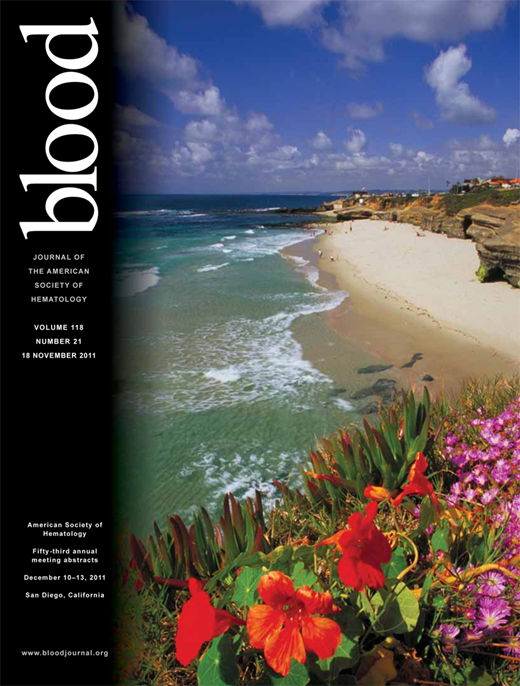Abstract
Abstract 3972
Second hematologic malignancies have been found to occur at a higher rate among multiple myeloma patients compared to the general population. Although alkylating therapy has been suggested to play a role, the underlying causes remain largely unclear. Increased survival benefit has been documented with the introduction of novel agents over the past decade, and, as noted in other cancers, there may also be a higher occurrence of second malignancies in the era of novel therapies. Recently, data from Phase III studies suggest that patients treated with lenalidomide with prior exposure to melphalan may have an increased risk compared to placebo. However, the contribution of other specific agents has not been well characterized. Evaluation of second malignancies in clinical trial and product safety data for bortezomib has not revealed an increased incidence in bortezomib-treated patients. Additionally, our follow-up study of the VISTA clinical trial participants after 5 years showed no elevation in risk (San Miguel, et al. ASH 2011). To expand our current knowledge, we are conducting a population-based study using the NCI SEER-Medicare database (NCI SEER cancer registry linked with diagnostic and treatment claims data of Medicare beneficiaries) to evaluate bortezomib and other standard treatment exposures in relation to second malignancies subsequent to multiple myeloma.
Using the NCI SEER-Medicare database, we identified all multiple myeloma patients with their first diagnosis between 1 Jan 2000 and 31 Dec 2007 aged 66 years or older. Exposure to chemotherapy was identified via Medicare claims, and second malignancies, defined as invasive cancers whose onset was after bortezomib-based therapy and occurring at least 2 months after the initial multiple myeloma diagnosis, were identified from the SEER registries. We identified the number of second malignancies among elderly patients with multiple myeloma and following bortezomib exposure; expanded multivariate analyses, adjusted for exposures, will be presented at the meeting.
A total of 9,377 multiple myeloma patients were identified (median age 76 years; 50% males). During the study period, 2,285 (21%) patients had any documented exposure to bortezomib (with or without other treatments). Patients with bortezomib exposure had a median age of 73 years, and 55% were male. Among these 2,285 patients with bortezomib exposure, 33 patients (1.4%) developed a second malignancy (4 [0.2%] hematologic and 29 [1.3%] solid tumors) during the study period after their first documented bortezomib exposure. Hematologic tumors were non-Hodgkin lymphoma (n=3) and acute myeloid leukemia (n=1). Solid tumors were prostate (n=4), bladder (n=4), lung and bronchus (n=3), colon (excluding rectum) (n=3), breast (n=3), and other (n=12). Among the 7,092 multiple myeloma patients with no documented exposure to bortezomib, 320 (4.5%) developed a second malignancy (55 [0.8%] hematologic and 265 [3.7%] solid tumors) during the study period. Hematologic tumors were non-Hodgkin lymphoma (n=16), acute myeloid leukemia (n=7), chronic lymphocytic leukemia (n=2), acute lymphocytic leukemia (n=1), chronic myeloid leukemia (n=1), Hodgkin lymphoma (n=1), and other (n=27). Solid tumors were lung and bronchus (n=46), prostate (n=38), colon (excluding rectum) (n=33), melanoma (n=23), bladder (n=21), breast (n=17), and other (n=87).
Based on more than 9,000 elderly multiple myeloma patients, we found a lower prevalence of second malignancies among persons exposed to bortezomib compared to those with no documented bortezomib exposure in our unadjusted analysis. To account for survival and adjust for other exposures, expanded analyses will be presented at the meeting, including standardized incidence ratios and calculations of absolute excess risk among patients exposed to bortezomib and other standard treatments compared to the general SEER population, cumulative incidence of second malignancy for each treatment group adjusting for death as a competing risk, and multivariate analyses to assess risk while adjusting for prior and concomitant treatments and other risk factors.
Gifkins:Janssen Research & Development: Employment; Johnson & Johnson: Equity Ownership. McAuliffe:Millennium Pharmaceuticals, Inc.: Employment. Matcho:Janssen Research & Development: Employment; Johnson & Johnson: Equity Ownership. Porter:Millennium Pharmaceuticals, Inc.: Employment. Chavers:Janssen Research & Development: Employment; Johnson & Johnson: Equity Ownership. Ponsillo:Millennium Pharmaceuticals, Inc.: Employment. King:Janssen Research & Development: Employment; Johnson & Johnson: Equity Ownership. Desai:Janssen Research & Development: Employment; Johnson & Johnson: Equity Ownership. Cakana:Janssen Research & Development: Employment; Johnson & Johnson: Equity Ownership. Esseltine:Millennium Pharmaceuticals, Inc.: Employment; Johnson & Johnson: Equity Ownership.
Author notes
Asterisk with author names denotes non-ASH members.

